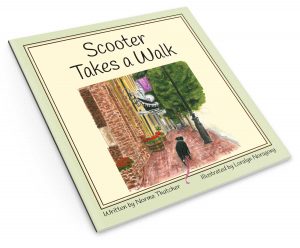
Image by Gerd Altmann on Pixabay
The ability to multitask is usually portrayed as a badge of honor. On the job seekers website Indeed.com, there is actually a category titled Multitask Jobs.
LoveToKnow.com, provides this description of a multitasker: “People who are able to multitask have the ability to perform several tasks nearly simultaneously. If you watch someone who is a multitasker, you’ll notice that the person has a certain rhythm to her work and is capable of changing tasks without a break in that rhythm.”
Well, gosh. Who wouldn’t want to hire THAT person?
Much like an urban myth, multitasking isn’t a reality. It’s that we’ve heard it talked about in such a positive way for so long that we’ve just come to believe it’s a good thing.
Study after study now shows that we don’t really perform multiple tasks at the same time; we simply shift our focus from one activity to another, and then back and forth. One expert calls it a “green light/red light” switching activity done over and over again.
There are many problems associated with this constant shifting of focus. A primary one is that when we fail to focus on just one activity at a time, productivity suffers. When we temporarily stop doing activity A to do part of activity B, there is lost time as we make the switch. Then when we go back to A, there’s another loss of time. It may not seem like much but think about a typical workday that is spent starting/stopping between multiple projects. Listen to how we speak to ourselves when we switch: “Now, where was I?”
People believe they’re getting more done by multitasking when the science says not only is less done but it also produces lower quality work.
In his book Learn Better, Ulrich Boser advises that multitasking while trying to learn something hinders your ability to absorb the new information because it “drags on short-term memory” and keeps us from gaining an understanding. So it’s a bad idea for kids to listen to music (or text or check social media) while doing homework or studying for a test. Boser also cites a study where adults who took online classes WITHOUT any background music absorbed 150% more of the information than those who had background music playing.
This ties in with my own public speaking recommendation regarding PowerPoint or other visual aid. When (as the presenter) you show a slide to the audience and you’re still talking, the audience is hovering in that no-man’s land between listening to you and taking in what’s on the slide. Asking our audience to multitask means either they don’t hear us or they can’t absorb the slide 100%. My best advice is to shut up and let the audience soak in the meaning of the slide. Then change the screen to black as you resume speaking.
About the only time we can do two things at the same time is when one of them is passive, one is mundane, and there is no risk involved. Here’s a good example: I listen to fiction through earbuds while I’m standing at the sink peeling potatoes. The task is mundane, the listening is passive, and I’m not going to hurt anyone with my potato peeler.
My word counter tells me that when I completed that last sentence, this post was at 586 words. Since Mr. Boser says we learn better in smaller doses, I’m going to continue this topic in part two on Tuesday.
~~~~~~




Norma:
And please make sure that the multitasker’s rhythm is not compromised in “HER” activity!!! Tsk, tsk, tsk!!! Now we know that only women multitask, eh?!?!?! Tee hee. AND, just what is this answer in digits stuff??
I definately Second this Motion…while I Often find myself “multitasking”…I just as often find myself saying,
“I don’t remember hearing/seeing that.”
I appreciate your reminder…when we Stop to smell a rose, if we Take the Time …it will smell so much sweeter!!
Thank you my friend????
I caught that “her” too, Bill. Norma, you do tend to discriminate…the poor men!!!
Betsy:
I am licking my wounds, but won’t wallow in them, just go on my way rejoicing that I have such a wonderful sister-in-law!!!
I admit I am a multitasker!!!!!!!!
It feels like I’m doing OK, but my brain is not cooperating!!!!
I initially write down a list of to-do and there is a sense of accomplishment as I check them off.
Thanks for the heads up!
You are completely right, and again this blog is such a treasure!!!!!!!